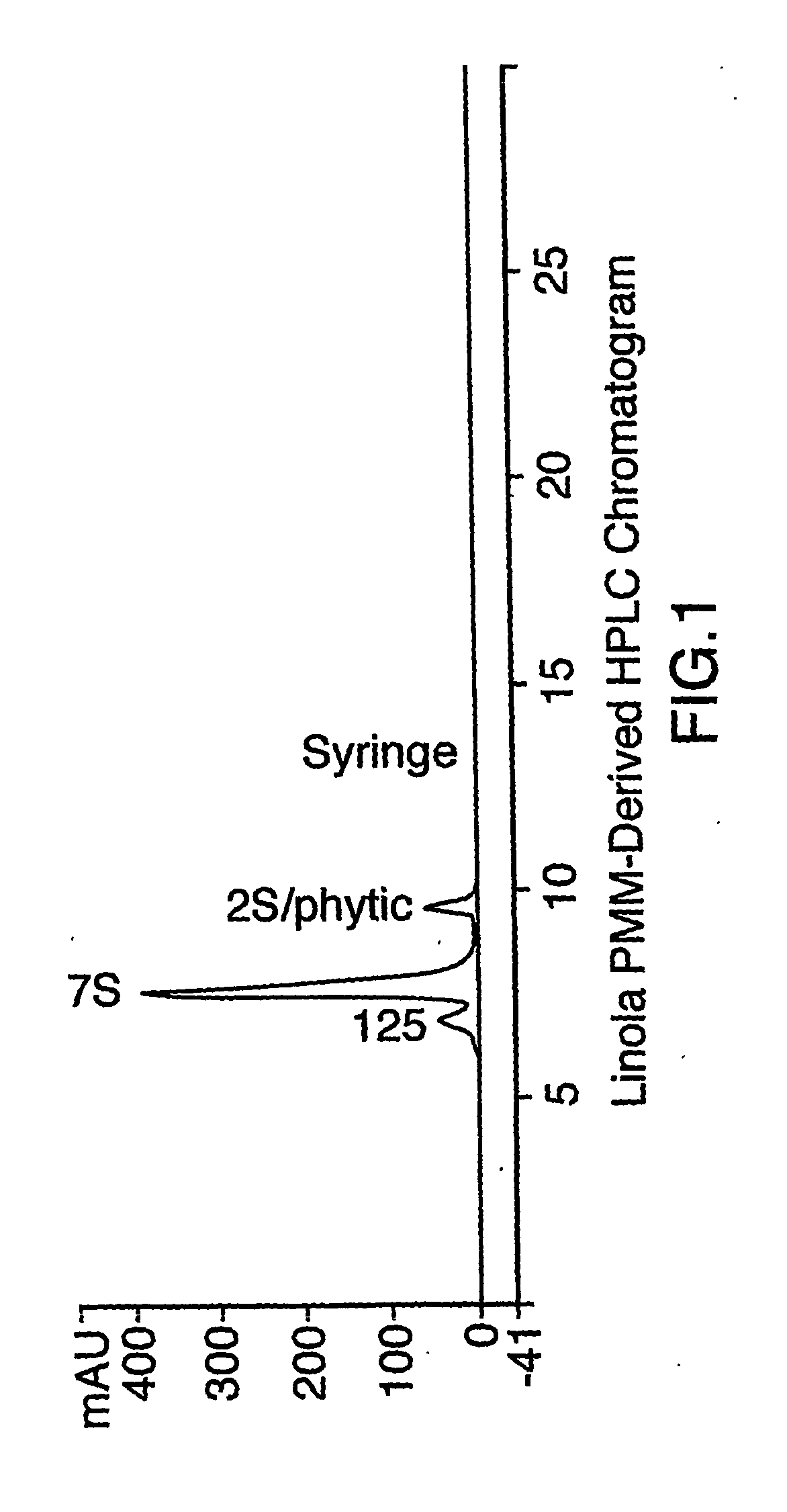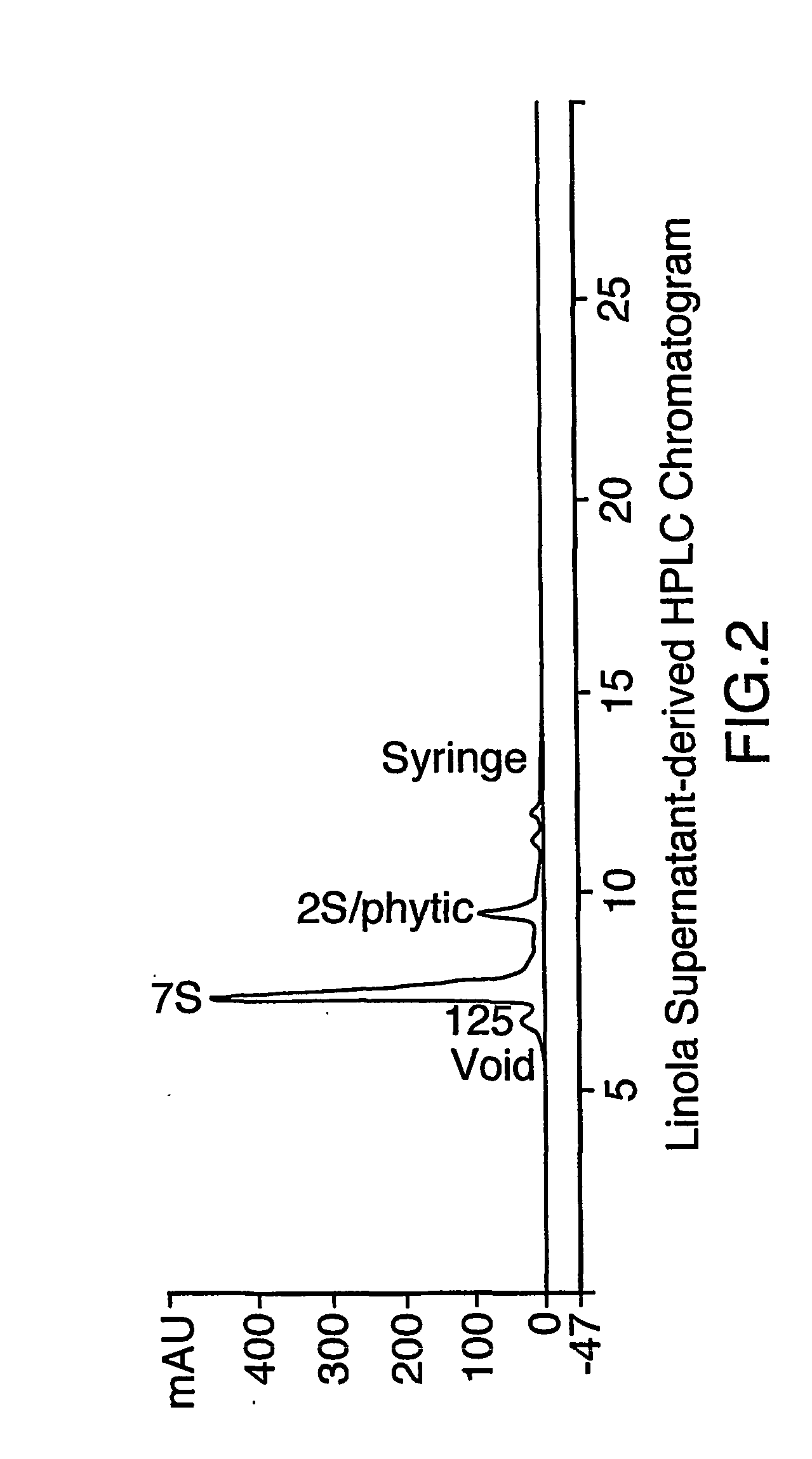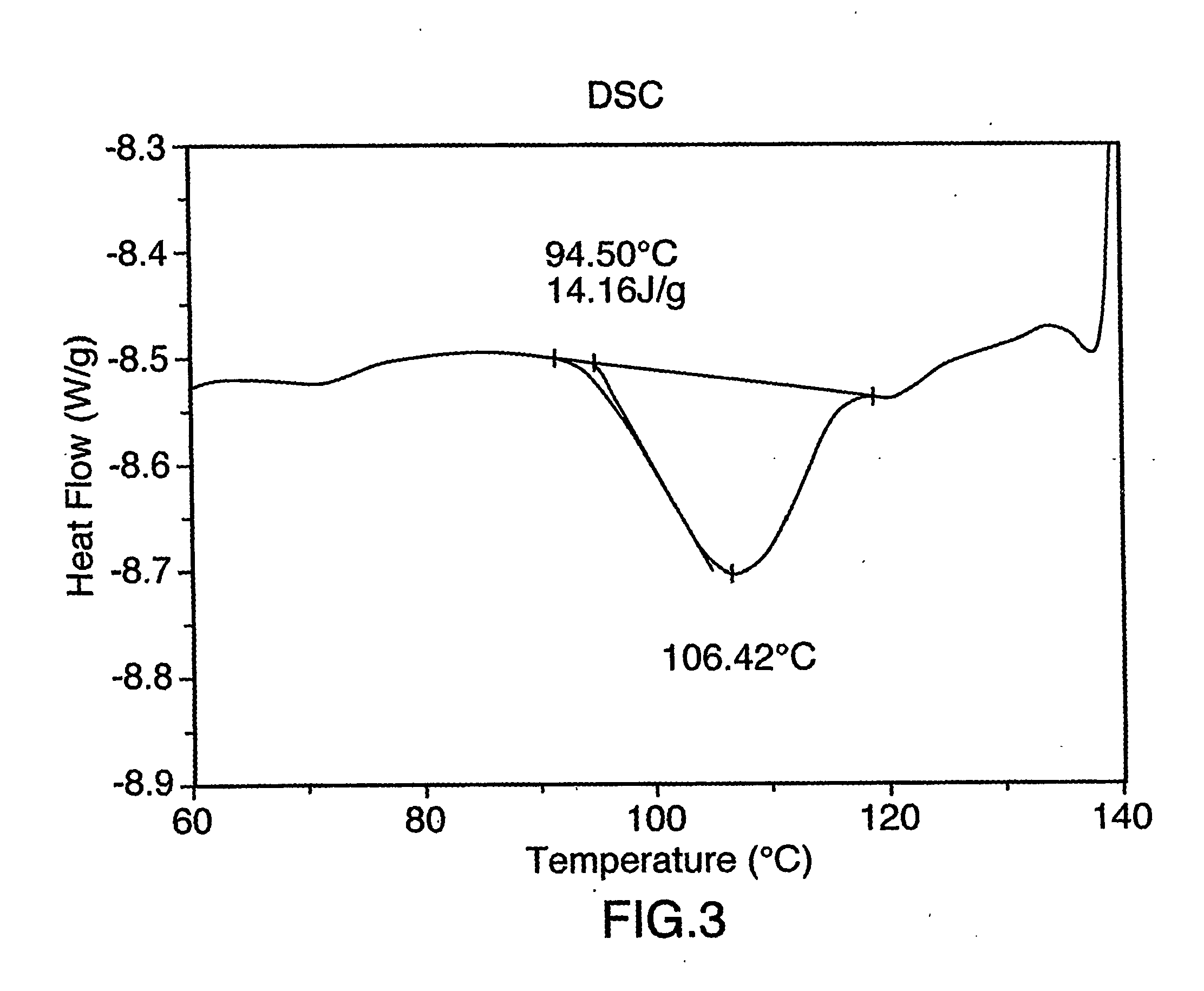Process for preparation of flax protein isolate
a technology of flax protein and isolate, which is applied in the field of recovery can solve the problems of limited difficulty in producing products with protein contents high enough to be classified as isolates, and achieve the effect of improving the yield of flax protein isola
- Summary
- Abstract
- Description
- Claims
- Application Information
AI Technical Summary
Benefits of technology
Problems solved by technology
Method used
Image
Examples
example 1
[0069] This Example illustrates the removal of mucilage from Linola oil seed meal.
[0070] Linola oil seed was washed using varying concentration levels of sodium bicarbonate by mixing aqueous sodium bicarbonate with a seed: solvent ratio of 1:8 with Linola oil seed for one hour at 50° C. using an overhead mixer set at high speed.
[0071] Washes were done at each concentration of aqueous sodium bicarbonate solution tested in order to compare the amount of mucilage recovered from the seeds. A total of 500 g of linola was washed in 4 L of sodium bicarbonate at each concentration.
[0072] The supernatant from each wash was decanted and 100 ml from each supernatant was diluted 1:1 with 88% ethanol to precipitate any solubilized mucilage. The mucilage then was collected and dried to calculate the total amount of mucilage removed from the seeds.
[0073] The amounts extracted at the various concentration of sodium bicarbonate solution is shown in Table I:
TABLE IWeight of mucilage removed dur...
example 2
[0076] This Example illustrates the preparation of a flax meal in accordance with one embodiment of the invention.
[0077] 25 kg of Linola oil seed, variety 2047, was added to 200 L of 0.5 M sodium bicarbonate at 50° C. in a 400 L mixing tank. The slurry was stirred vigorously for one hour. After settling, the aqueous phase was decanted and the waste was discarded. A one-liter portion of the decanted aqueous phase was diluted with an equal volume of ethanol, to precipitate mucilage to provide a rough estimate of the amount of mucilage recovered.
[0078] After decanting the aqueous phase, the seed was rinsed twice with hot tap water to remove any residual wash solution. The procedure of sodium bicarbonate extraction, separation and washing was repeated five times. The seed was then washed four times with hot tap water to remove any residual wash and mucilage. The seed was found to have lost its characteristic slimy feel, providing a good indication that the mucilage had been removed.
[...
example 3
[0081] This Example illustrates the preparation of a Linola protein isolate from mucilage-reduced meal by iso-electric precipitation.
[0082] 10 kg of the defatted Linola oil seed meal, prepared as described in Example 2, was added to 200 L of 0.15 M NaCl solution at room temperature and the pH of the mixture was adjusted to 11.0 with 50 wt % / o sodium hydroxide solution. The slurry was stirred for one hour, after which the extracted meal was permitted to settle from the resulting protein solution for one hour.
[0083] 100 L of protein solution, having a protein content of 13 g / L, was then decanted and filtered through 20 and 0.2 μm filters in a filter press in order to clarify the solution. The clarified solution then was placed in a cooler at 4° C. for 16 hours to permit any oil present to rise to the surface, where it could be skimmed off. Very little oil was seen, indicating a very effective defatting step.
[0084] The pH of the protein solution at ambient temperature was then adjus...
PUM
| Property | Measurement | Unit |
|---|---|---|
| temperature | aaaaa | aaaaa |
| temperature | aaaaa | aaaaa |
| concentration | aaaaa | aaaaa |
Abstract
Description
Claims
Application Information
 Login to View More
Login to View More - R&D
- Intellectual Property
- Life Sciences
- Materials
- Tech Scout
- Unparalleled Data Quality
- Higher Quality Content
- 60% Fewer Hallucinations
Browse by: Latest US Patents, China's latest patents, Technical Efficacy Thesaurus, Application Domain, Technology Topic, Popular Technical Reports.
© 2025 PatSnap. All rights reserved.Legal|Privacy policy|Modern Slavery Act Transparency Statement|Sitemap|About US| Contact US: help@patsnap.com



